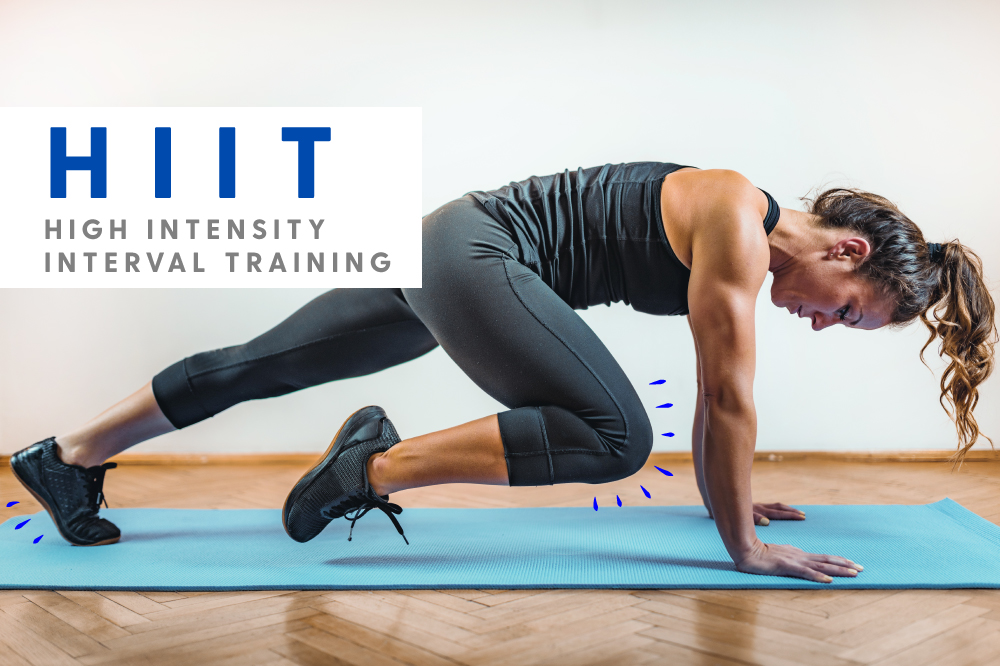
 Don’t have time to exercise? Welcome to HIIT!
Don’t have time to exercise? Welcome to HIIT!
HIIT has rapidly become an increasingly popular modality of training, being utilised by both gyms and prescribed by exercise professionals. But what is HIIT? HIIT stands for high intensity interval training and is characterised by brief intermittent bursts of high intensity activity followed by a period of low intensity recovery or rest.2
Research has shown HIIT is a time efficient alternative form of exercise to improve a vast array of health markers. Even bouts of less than 10 minutes of “on” time, with total exercise time being as little as 20 minutes including warm up and cool down, have been shown to be effective. 1 Essentially, HIIT has been shown to result in physiological adaptations that increase your ability to go harder and longer! These improvements include:
- Improved VO2max
- Decreased risk of cardiovascular disease/complications
- Increased skeletal muscle oxidative capacity
These physiological improvements can be on par, or even superior, to traditional endurance exercise like long distance runs, rides or swims.4
Additionally, HIIT can increase energy expenditure even after you’ve stopped exercising, invaluable for your weight loss journey. How is this possible you ask? Due to the increased demand of oxygen from the high intensity exercise bouts, your body goes through a process called excess post-exercise oxygen consumption (EPOC). EPOC is a result of the body trying to replenish itself during the recovery or low intensity phase of exercise, this results in an increased use of energy or metabolic rate at rest. This increased metabolic rate can last anywhere from 3-24 hours post exercise.3
The intensity and duration of the intervals can be manipulated to suit based on your fitness goals, health status and current functional capacity. Our accredited exercise physiologists are university qualified and specialise in prescribing and delivering safe exercise for chronic conditions, injury rehabilitation or general health and wellbeing.
By David Gahan – Allsports Indooroopilly, Forest Lake & Calamvale
References
- Gaesser, G. A., & Angadi, S. S. (2011). High-intensity interval training for health and fitness: Can less be more? Journal of Applied Physiology, 111(6), 1540–1541. https://doi.org/10.1152/japplphysiol.01237.2011
- Gibala, M. J., Little, J. P., Macdonald, M. J., & Hawley, J. A. (2012). Physiological adaptations to low-volume, high-intensity interval training in health and disease. Journal of Physiology, 590(5), 1077–1084. https://doi.org/10.1113/jphysiol.2011.224725
- Laforgia, J., Withers, R. T., & Gore, C. J. (2006). Effects of exercise intensity and duration on the excess post-exercise oxygen consumption. Journal of Sports Sciences, 24(12), 1247–1264. https://doi.org/10.1080/02640410600552064
- Warburton, D. E. R., McKenzie, D. C., Haykowsky, M. J., Taylor, A., Shoemaker, P., Ignaszewski, A. P., & Chan, S. Y. (2005). Effectiveness of High-Intensity Interval Training for the Rehabilitation of Patients With Coronary Artery Disease. The American Journal of Cardiology, 95(9), 1080–1084. https://doi.org/https://doi.org/10.1016/j.amjcard.2004.12.063
